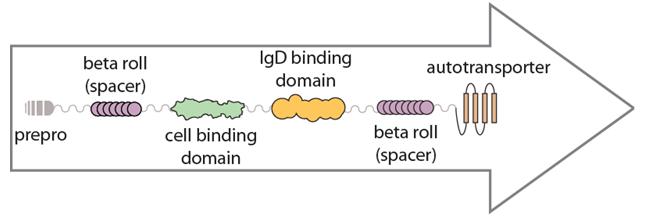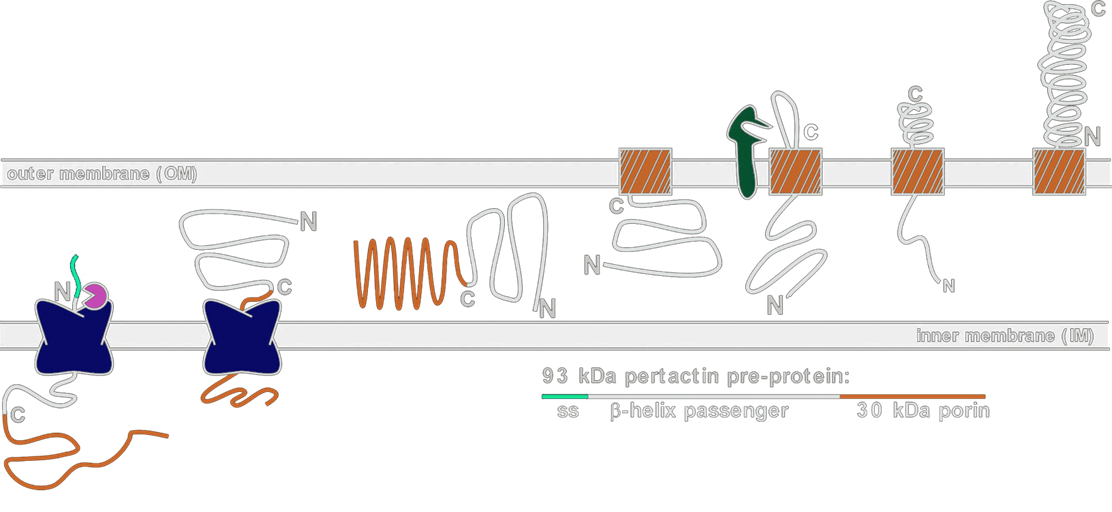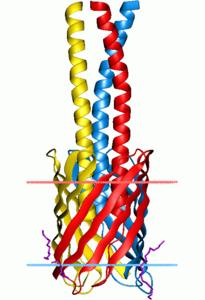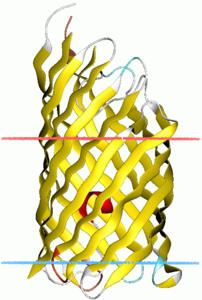Team:Berkeley Wetlab/Cell Surface Display Parts
From 2009.igem.org
Susanychen (Talk | contribs) |
Susanychen (Talk | contribs) (→azo1653 AtD) |
||
| Line 78: | Line 78: | ||
Hag AtD | Hag AtD | ||
Pcryo_1225AtD | Pcryo_1225AtD | ||
| + | |||
Hia AtD - species Haemophilus influenzae | Hia AtD - species Haemophilus influenzae | ||
| - | [[Image:Hia ATD.jpg| | + | [[Image:Hia ATD.jpg|50px|right]] |
upaG_short | upaG_short | ||
| + | |||
espP(beta) - species Escherichia Coli | espP(beta) - species Escherichia Coli | ||
| - | [[Image:EspP ATD.jpg| | + | [[Image:EspP ATD.jpg|50px|right]] |
ehaB | ehaB | ||
Revision as of 16:28, 19 October 2009
![]()
Follow any of the links below for more information about each of the passengers we made.
|
Streptavidin |
Leucine Zippers |
Ag4 Peptide |
|
MGFP-5 |
Cellulases |
TypeIII Needle scFv |
- Displayers: An outmembrane protein that carries another protein through the outermembrane
For successful cell surface display of proteins, there must be an effective protein localization mechanism. Gram-negative bacteria such as E. Coli have inner and outer membranes that present a problem for transporting proteins synthesized in the cytoplasm to the outside of the cell. Various transport schemes exist in gram-negative bacteria to effectively localize proteins to the outermembrane. The most common schemes are TypeI, TypeIII, and TypeV secretion. In our display systems, we chose a class of outermembrane proteins called autotransporters that localizes proteins via the TypeV secretion mechanism. This system is particular suited for cell surface display because the outermembrane protein (aka displayer) spontaneously inserts into the outermembrane and pulls the protein it is covalently linked to (aka passenger)into the extracellular space. Moreover, autotransporters are capable of pulling through large proteins, such as enzymes and single-chain variable fragments.
As depicted in the diagram above, the autotransporter localization begins with localization to the periplasm via the Sec secretion pathway. The translocated protein remains unfolded in the periplasm until it inserts into the outermembrane by forming a beta barrel with its C-terminus. The N-terminus of the protein (containing our passenger of interest) is then pulled through the barrel to the outside of the cell.
In constructing our parts, we looked into various autotransporters with different attributes conducive to cell surface display.
azo1653 AtD
OprF AtD Cl02365 AtD VtaA11 Hag AtD Pcryo_1225AtD
Hia AtD - species Haemophilus influenzae
upaG_short
espP(beta) - species Escherichia Coli
ehaB TshA VirG YuaQ AtD AIDA-I AtD Ag43_short
Spacer elements occur in natural membrane protein systems. This is exemplified in the Hag, autotransporter-containing system, shown below:

Their precise role in the functionality of proteins has not been extensively characterized.
![]()
Repeated portion of ice nucleation protein (INP) sequence.
 "
"
















